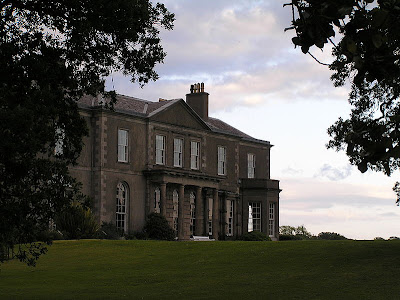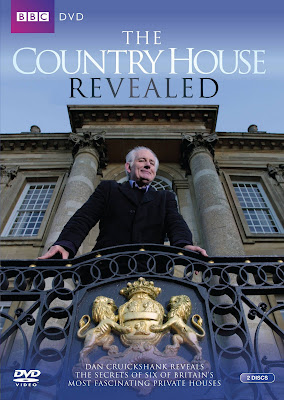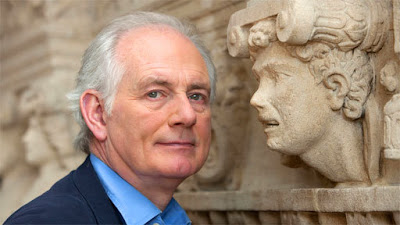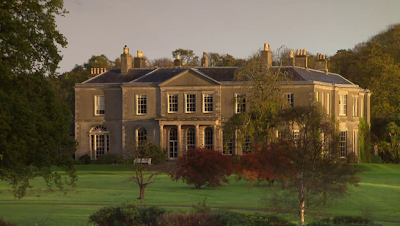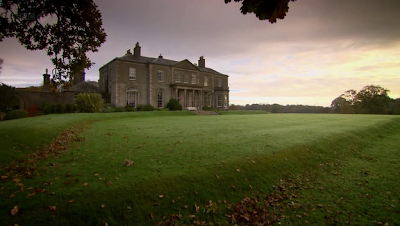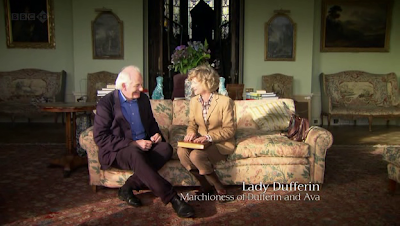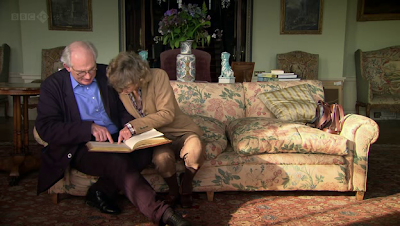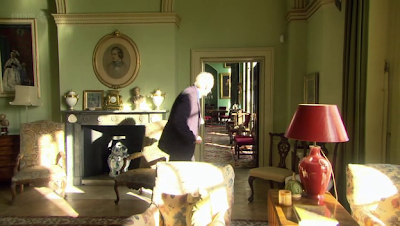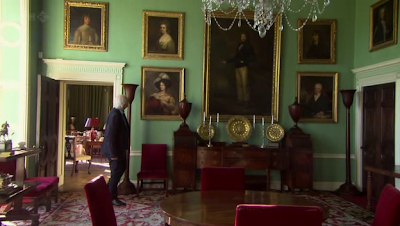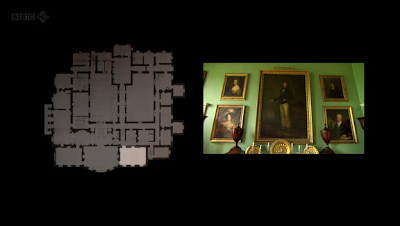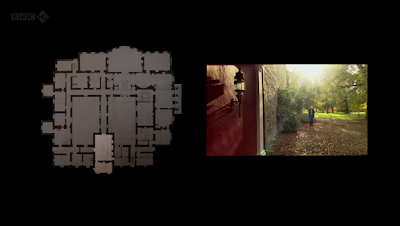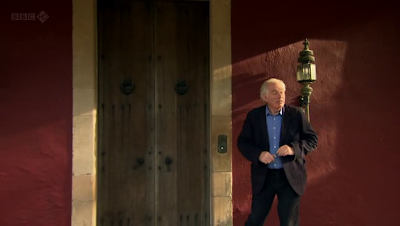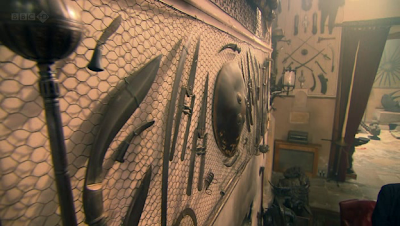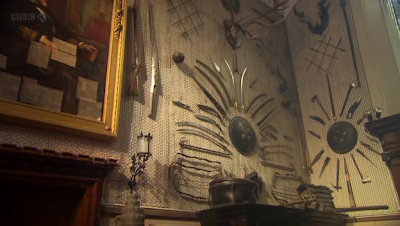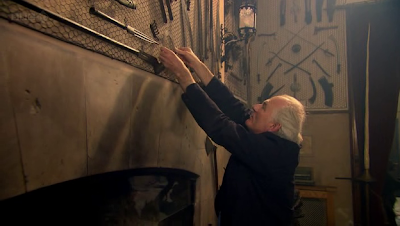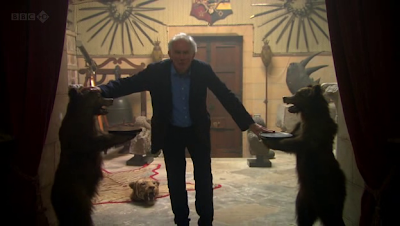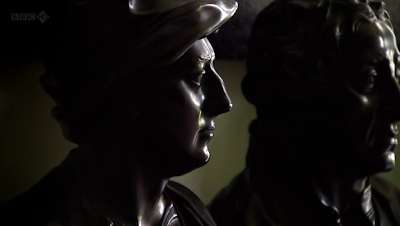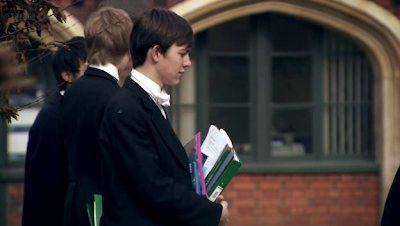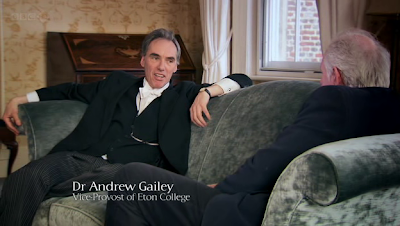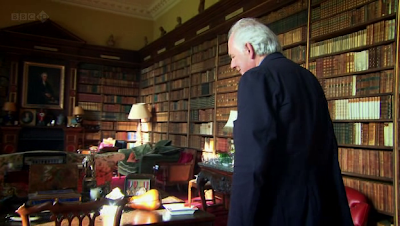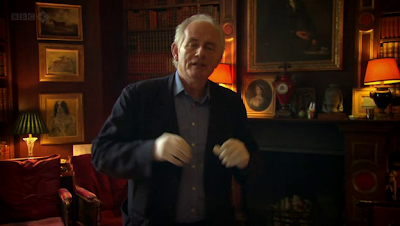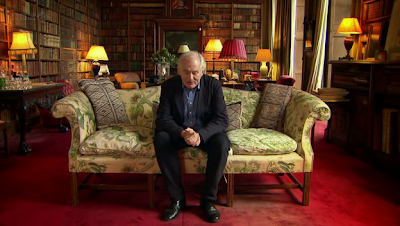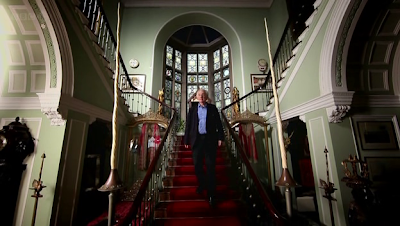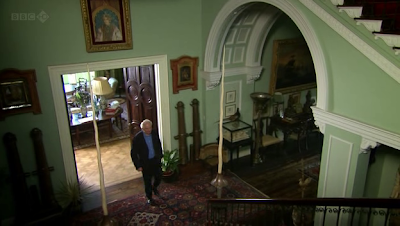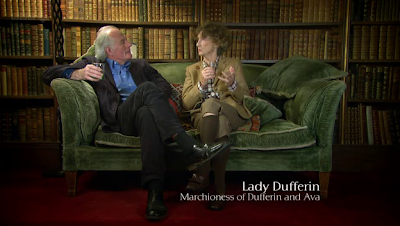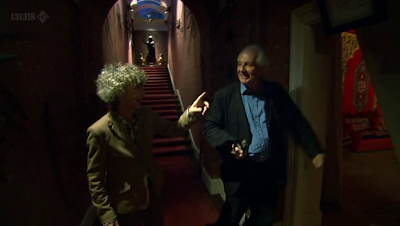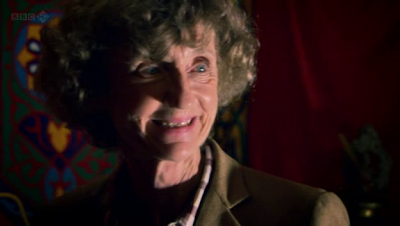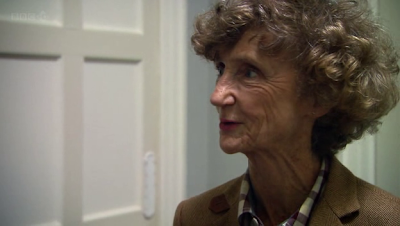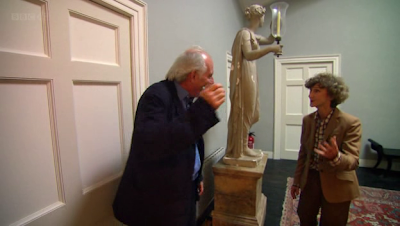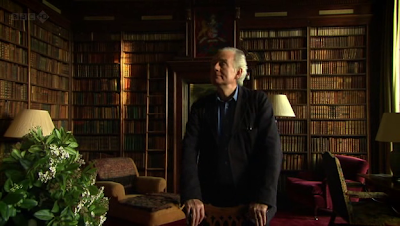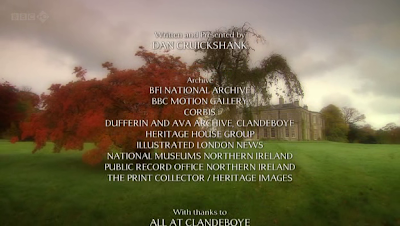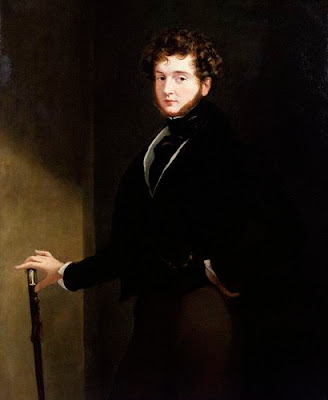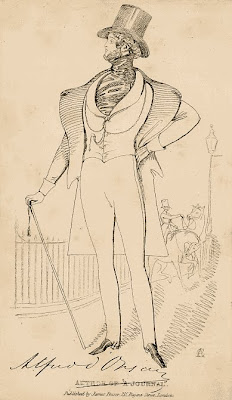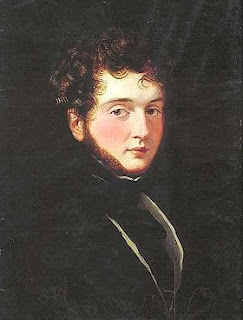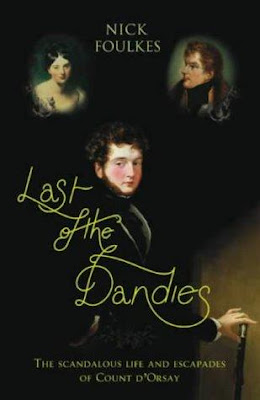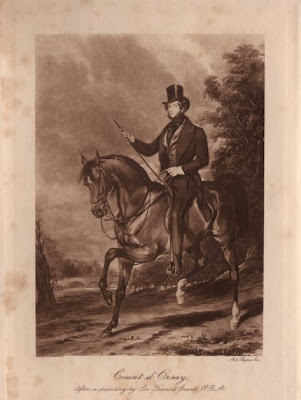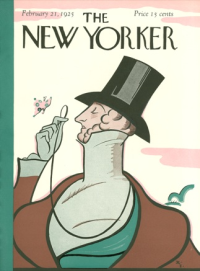![]()
![]()
![]()
Alfred d'Orsay, known as the comte d'Orsay (Count of Orsay) (Alfred Guillaume Gabriel; 4 September 1801–4 August 1852) was a French amateur artist, dandy, and man of fashion in the early- to mid-19th century.
He was born in Paris, the second son of Albert Gaspard Grimaud, a Bonapartist general. His mother was Eleanore de Franquemont, an illegitimate daughter of the Duke of Württemberg and the Italian adventuress Anne Franchi, and his elder brother died in infancy.
In 1821 he entered the French army of the restored Bourbon monarchy (against his own Bonapartist tendencies), attending the lavish coronation of George IV of the United Kingdom in London that year (staying until 1822) and serving as a Garde du Corps of Louis XVIII. While in London he formed an acquaintance with Charles Gardiner, 1st Earl of Blessington and Marguerite, Countess of Blessington, which quickly ripened into intimacy. The following year the couple visited him where he was stationed at Valence on the Rhone, and at the invitation of the earl he accompanied the party on their tour through Italy.
In the spring of 1823 he met Lord Byron at Genoa, and the published correspondence of the poet at this period contains numerous references to d'Orsay's gifts and accomplishments, and to his peculiar relationship to the Blessington family. A diary which d'Orsay had kept during his visit to London in 1821–1822 was submitted to Byron's inspection, and was much praised by him for the knowledge of men and manners and the keen faculty of observation it displayed.
On December 1, 1827, Count d'Orsay married Lady Harriet Gardiner, a girl of fifteen, the daughter of Lord Blessington by his previous wife. The union, if it rendered his connection with the Blessington family less ostensibly equivocal than before, was in other respects an unhappy one, and a legal separation took place in 1838, at which Lady Harriet paid over £100,000 to his creditors (though even this did not cover all his debts) in exchange for d'Orsay giving up all claims to the Blessington estate.
After the death of Lord Blessington, which occurred in 1829, the widowed countess returned to England, accompanied by d'Orsay, and her home, first at Seamore Place, then at Gore House, soon became a resort of the fashionable literary and artistic society of London, which found an equal attraction in host and in hostess. The count's charming manner, brilliant wit, and artistic faculty were accompanied by benevolent moral qualities, which endeared him to all his associates. His skill as a painter and sculptor was shown in numerous portraits and statuettes representing his friends, which were marked by great vigour and truthfulness, if wanting in the finish that can only be reached by persistent discipline.
It was at Gore House that d'Orsay met Benjamin Disraeli and Edward Bulwer-Lytton, themselves young men of fashion who dabbled in the arts. D'Orsay and Disraeli were good friends in the 1830s–to the point that Disraeli asked d'Orsay to be his second, when it appeared that Disraeli would fight a duel with Morgan O'Connell, the son of Irish agitator Daniel O'Connell. D'Orsay declined, on the grounds of being a foreigner, and Disraeli went with Henry Baillie, a mutual friend. The character of Count Alcibiades de Mirabel in Disraeli's novel Henrietta Temple was modeled on d'Orsay, to whom the book was dedicated.
The comte's and Marguerite's pyramidal tomb at Chambourcy (Yvelines, France)Count d'Orsay had been from his youth a zealous Bonapartist, and one of the most frequent guests at Gore House was Prince Louis Napoleon. In 1849 the count went bankrupt, and the establishment at Gore House being broken up, he went to Paris. Lady Blessington sold almost all her possessions and followed him there, but died a few weeks after her arrival, leaving him heartbroken. He endeavoured to provide for himself by painting portraits. He was deep in the counsels of the prince president (who had also returned to Paris from exile, and been elected president the year before d'Orsay arrived), but relations between them were less cordial after Louis's 1851 coup d'état (in which he became Emperor Napoleon III), of which the count had expressed his strong disapproval.
Reluctant to entrust d'Orsay with any affairs of state, Napoleon III finally offered him the position of director of the Beaux-Arts. Within a few months of the appointment, however, D'Orsay contracted a spinal infection, of which he died on 4 August 1852 in the house of his sister Ida, duchesse de Gramont, at Chambourcy, just a few days after his appointment had been officially announced. He had designed a pyramidal grey stone tomb for Lady Blessington at Chambourcy, and he too was buried in it, with Napoleon III among the mourners at the funeral.
![]()
A flounce too far
The Count D'Orsay may have been the first shopaholic. Kathryn Hughes enjoys Nick Foulkes's glittering, chatty - and long - life of a colourful gentleman, Last of the Dandies
Last of the Dandies: The Scandalous Life and Escapades of Count D'Orsay
by Nick Foulkes
Kathryn Hughes
The Guardian, Saturday 14 June 2003
Count D'Orsay loved to shop. Mostly he bought clothes, reckoning on six pairs of gloves to get through a single day, but he was quite happy to branch out into home furnishings, too. The stately pleasure domes of Kensington, St James and Mayfair where the lovely man lived throughout the 1830s and 40s (it was not until middle-age that he turned into "stout count") were crammed with pretty things.
There were cushions, fans, scent-bottles, easy chairs and matching footmen gilded in green and gold. When he moved out of his last fancy address, Gore House, in 1848, the auction of D'Orsay's worldly goods provoked a stampede of wannabes and retail tourists, all determined to catch sight of the way a legend lived.
D'Orsay shared the Kensington mansion with Lady Blessington, a pretty, small-town Irish slattern who had managed to reinvent herself as an intellectual and artistic lioness. In a complicated Oedipal tangle that intrigued London's gossiping classes, D'Orsay had previously been married to Lady Blessington's step-daughter. If the marriage was ever consummated, it was certainly not prosecuted with any enthusiasm, and instead D'Orsay divided his affections between Lady Blessington and her husband.
It was Lord Blessington, whose death in 1829 made the whole situation marginally more manageable, who funded the oddly extended household. Rich from his Irish estates, the boyishly enthusiastic Blessington had paid for himself, his wife and their shared lover and son-in-law to ramble around Europe in style, stopping to set up camp periodically in some of the most beautiful palazzos, palaces and hotels particuliers that the civilised world had to offer.
All of this should have been a recipe for disaster, but in fact the ménage a trois was sweetly harmonious (the only loser was Blessington's daughter, who grew wan and silent the further she got into her lacklustre marriage with D'Orsay - only a new lover and divorce made her cheerful again). In fact, none of the main players seems to have been very interested in sex at all. Lord Blessington preferred amateur dramatics, Lady Blessington was more worried about keeping up to speed with her reading, and D'Orsay liked to shop.
Tall and handsome, his dandy look was a million miles away from the earlier example of Beau Brummell. Whereas Brummell had made a virtue of simplicity and clean lines, D'Orsay adored colour and flounce. His waistcoats were loud, his trousers were tight and his smell - usually jasmine - must have announced his arrival several minutes before his appearance. Disraeli and Dickens were just two of the hundreds of loud young men who pored over the count's elaborate appearance in the hope of reproducing some of that impact on a budget.
Nick Foulkes seems to be touchingly fond of D'Orsay. Instead of giving us a camp old monster, he reminds us of D'Orsay's nicer side. Unlike Brummell, who could reduce a society hostess to tears with a cold comment and judging sneer, D'Orsay had no desire to make anyone feel plain or dowdy. He was a kind, generous employer, a keen watcher of politics in his native France (although he never had the clout he liked to imagine) and a more than averagely talented painter. In middle-age and with the Blessington millions pretty much spent, he took to drawing sketches of the great and the good who nearly always doubled as personal friends. A delighted Duke of Wellington declared that D'Orsay was the only person who had managed to paint him looking like a gentleman.
Foulkes writes fluently and well. Perhaps, indeed, too fluently: at 466 pages, the book is overlong. In part this is because Foulkes insists on quoting at length from the original sources - letters and legal documents are repeated in full. In one way this is cheering: there is nothing like hearing an extended piece of prose to give you a sense of the mind that lies behind it. Too many biographies depend on paraphrase, with the result that the original voice is all but drowned. But even the most dedicated reader of Last of the Dandies might feel faint when faced with page after page of indented, small point print.
Foulkes's editors have also served him badly over the plates. Finding likenesses of a subject who lived in a pre-photographic age is always tricky. But to be reduced to sticking in pictures of modern road signs (Rue de Comte d'Orsay, Allée Lady Blessington) smacks of desperation. In black and white, and sometimes so dark as to be barely decipherable, these dowdy illustrations are just the sort of thing that would have made the Comte d'Orsay weep with frustration and shame.
![]()
![]()
The New Yorker
The magazine's first cover illustration, of a dandy peering at a butterfly through a monocle, was drawn by Rea Irvin, the magazine's first art editor, based on an 1834 caricature of the then Count D'Orsay which appeared as an illustration
ORSAY ALFRED GUILLAUME GABRIEL comte d' (1801-1852)
Lieutenant aux gardes du corps de Louis XVIII, le comte d'Orsay n'aurait pas laissé son nom à la postérité sans une réputation de dandy qui fit sa légende. Du dandy, il eut le mépris de convention, l'élégance d'esthète, le culte du moi, et sa vie s'accorde en quelque manière avec le « geste du dandy ». Il n'a guère plus de vingt ans lorsqu'il rencontre lady Blessington, belle vedette de la société londonienne. Il réussit à devenir à la fois l'amant de la dame, le protégé du vieux lord Blessington et l'époux de sa fille, belle-fille de lady BlessingtonLady Blessington, T. Lawrence. Le scandale, qui évite l'inceste, amuse le Tout-Londres, séduit par ce Français, beau, élégant et charmeur : « Il plaisait si naturellement et si passionnément à tout le monde qu'il faisait porter son médaillon jusqu'à des hommes. » Une seule mécontente dans cette histoire : la jeune comtesse d'Orsay que son mari n'a même pas regardée. À la mort de lord Blessington en 1829, il se sépare officiellement de sa femme pour vivre avec sa maîtresse.
Pour Barbey d'Aurevilly, d'Orsay n'est pas un dandy, mais un lion : « C'est une nature infiniment plus complexe, plus ample et plus humaine que cette chose anglaise. » Il lui reconnaît une véritable nature d'artiste : « Les marbres laissés par d'Orsay ont de la pensée. » Amateur d'art, d'Orsay s'occupe aussi, en effet, à la peinture et surtout à la sculpture.
Après avoir parcouru l'Europe, il vit avec lady Blessington en France puis, après 1830, en Angleterre, à Gore House où le couple reçoit Thomas Moore, Disraëli, Dickens, Thackeray, Louis Blanc, Alfred de Vigny et Louis Napoléon Bonaparte. Ce dernier, alors que le comte d'Orsay avait fui l'Angleterre et ses créanciers, le nomma directeur des Beaux-Arts peu de temps avant sa mort.
André Jean TUDESQ
